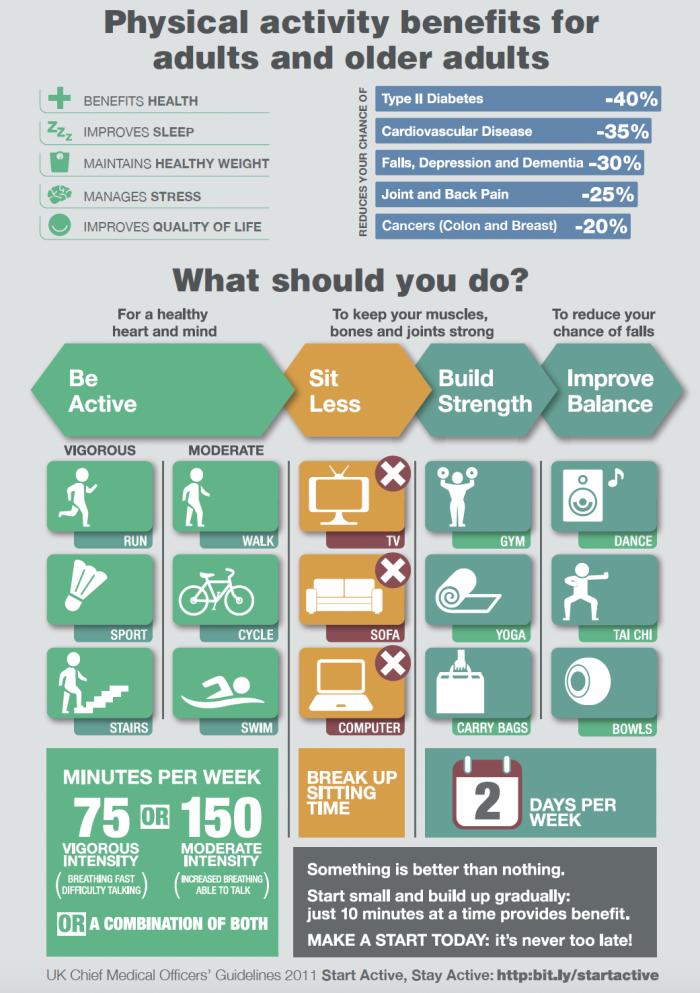Nerve-related arm pain
Dealing with nerve-related arm pain
Being active
Being active can help reduce neck pain. Exercise supports recovery and acts as a natural pain reliever. There’s no single “best” type of exercise, so try different activities that you enjoy, like walking, cycling, or aqua aerobics.

Keep up with your usual daily activities, including work, social events, and hobbies, where possible.
If you are local to Sheffield and you would like support to increase your physical activity, then you can
- Self-refer to Move Well for personalised support and access to a wide range of physical activity opportunities, tailored to your specific needs and preferences.
- Find sport, leisure and activity groups in your local area.
- For more activity tips, visit our physical activity page under the wider health section of the website
Pace the activities or positions which trigger your symptoms
Identify what may trigger your symptoms. Instead of avoiding these activities completely, try pacing them. Take regular breaks or change your position to prevent further strain on your arm.
Your lifestyle
A healthy body speeds up recovery. A balanced diet, regular activity, not smoking, and maintaining a healthy weight all help. Small lifestyle changes can improve recovery and reduce future pain. For more on healthy lifestyle, check out our Wider health section.
Heat or Ice treatment
Heat packs
A warm pack can help ease muscle tightness and pain. Use a microwaveable wheat bag or hot water bottle wrapped in a towel for 15-20 minutes, 2-3 times a day. Avoid using heat on swollen areas.
Ice packs
Ice can numb pain. Apply an ice pack (or frozen vegetables wrapped in a towel) for up to 10 minutes, 2-3 times a day.
Pain medication
Pain medication can help you stay mobile. Consult your GP or pharmacist for advice.
Further Treatment
Physiotherapy
Most people recover from nerve-related arm pain on their own, especially if they stay active and continue with their normal daily activities. Short periods of rest are fine, but it’s important to get moving again as soon as possible.
However, some people may benefit from more tailored treatment, such as physiotherapy. Physiotherapy typically focuses on active recovery with personalised exercises. While recovery times vary, it can take 3-6 months of consistent effort to see significant improvements. If you need extra support, a physiotherapist can guide you through a plan to help you recover fully.
Surgery
Most people with nerve-related arm pain improve with conservative treatment. Only a small number may need surgery, which carries some risks. Your healthcare professional can help you explore this option if needed.